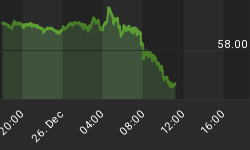Despite ballooning Fed reserves to bail out banks, money supply as measured by the growth in money supply with a zero maturity (notes and coins, check accounts, savings deposits and money-market accounts collectively) continues to slow.

The slowing growth is contra to what normally happens when the Fed lowers the Federal funds rate.

In real terms the growth rate is also slowing.

The slowing in MZM growth is a consequence of US banks' tight lending standards. The trend is likely to continue until the banks relax these standards.

Velocity of MZM is at long last picking up after it started falling in the first quarter of 2007 - six quarters before economic growth slumped. The increase in MZM velocity effectively points to increased economic activity. Further increases in this velocity are essential for sustained economic growth.

Bottoms in consumer sentiment and MZM growth coincide, emphasizing the importance of improved consumer sentiment to get the economy going.

Lastly, the US bond market is an excellent indicator insofar as MZM velocity is concerned. Currently the yield on the 10-year note is pointing to further improvements in money velocity. The US bond market therefore also suggests that consumer sentiment is likely to continue improving and that the current improvement in the economy is sustainable, albeit probably at a slow rate.

Note: The source for all graphs is Plexus Asset Management, based on data from I-Net Bridge.
Did you enjoy this post? If so, click here to subscribe to updates to Investment Postcards from Cape Town by e-mail.
















